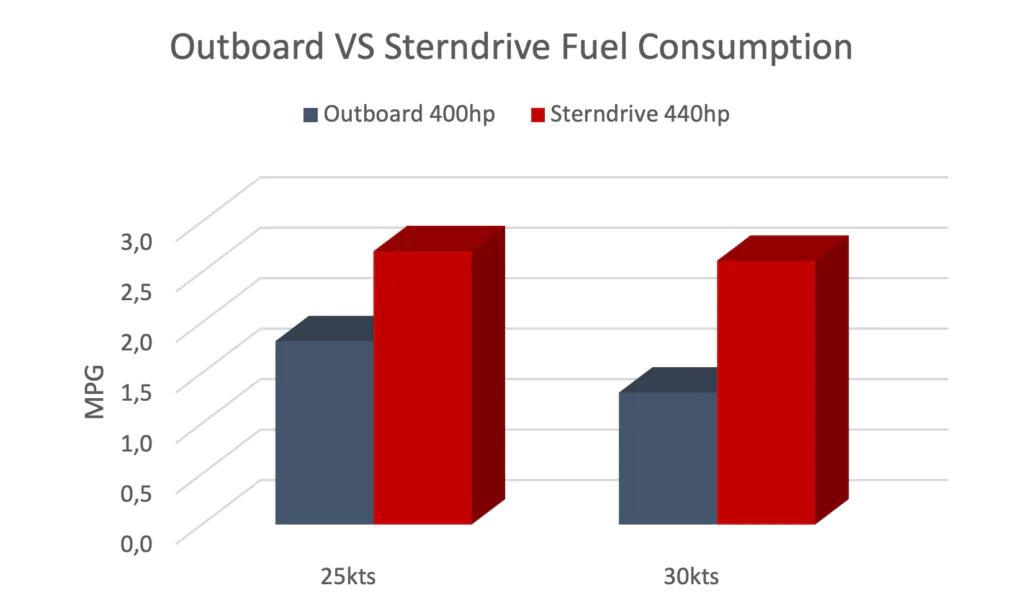Today the article is comparing inboard diesel sterndrives vs petrol outboards, with fuel efficiency in mind. While outboards are typically very similar between brands (with an exception of some new low hp electric outboards and now even diesel outboards hitting the market), inboards on the contrary can vary significantly. Firstly, you have a choice of the engine brand, in our case we opted for YANMAR. Then a choice of fuel type (petrol or diesel), followed by a choice of a naturally aspirated, supercharged or turbocharged, and then an abundance of drive options to choose from. The common drive types can include direct shaft drive, v-drive, z-drive, jet drive, pod drive, surface drive and stern drive. Each drive type delivers it’s own advantages and compromises, but this will be discussed further in a future article.
Outboard Petrol vs Inboard Diesel Sterndrive
This is a topic that has been much discussed, and debated at watering holes and yacht clubs globally. Despite continuous debates, the data suggests that the diesel sterndrive clearly wins on fuel efficiency, every time. Lets take a look at some comparisons made by benchmark tests to observe this. The test shows how different the level of fuel efficiency is for inboard diesel sterndrives in comparison to petrol outboards, and what this could mean for you as a future power catamaran owner.

Inboard Diesel Sterndrive has Greater Fuel Efficiency
The sophisticated four-stroke outboard engines available to boaters today have come a long way from the smelly and thirsty motors of the past. However, diesel inboard sterndrive motors remain winners in this race for fuel efficiency. One well-publicized test compared two comparable 9m boats, one equipped with a pair of 200hp outboards and other with twin 220 hp diesel inboards, at two speeds. With both boats running at 25 knots, the outboard-powered petrol boat burned 15.8 gallons (60 litres) of fuel per hour. In comparison, the inboard sterndrive-equipped boat burned through only 10.6 gallons (40L) per hour. At 30 knots, the difference was even more impressive. The outboard vessel burned 26.4 gallons (100L) per hour compared to just over 13.2 gallons (50L) per hour for the sterndrive. That’s 50% better fuel efficiency at 30kts, which is a significant difference, especially over a longer period.
Real-life Example
So how does this effect your boating? Well, as per our catamaran vs monohull scenario, let’s consider this data in a real life scenario to visualise the fuel efficiency. Motoring from Miami, Fl to Bimini in the Bahamas will be the example used, whose journey equals 50 nautical miles.
In the outboard powered monohull at 30kts, you would make the trip in one hour 40 minutes, and burn 43.8 gallons (166L). At $3.30/ gallon the trip will cost you $144.60. In comparison, that same trip at 30kts with an inboard sterndrive will burn 21.9 gallons (83L) of diesel. At todays rate of $3.50 / gallon for diesel that will cost you $76.70. This significant improvement in efficiency allows you to either spend less money per journey or to significantly shorten travel time.
Additional Resources
Learn more about the power catamaran’s fuel efficiency HERE>>
Gain insight about how power catamaran fuel efficiency compares to that of a monohull HERE>>